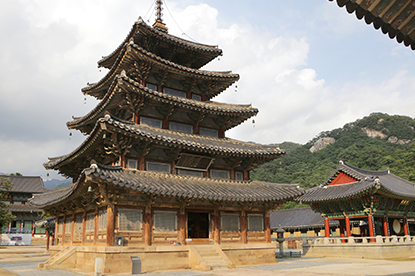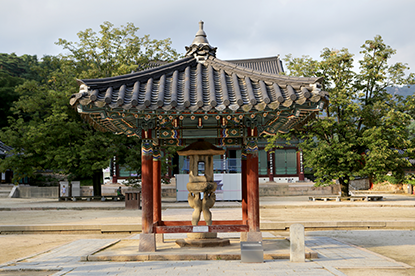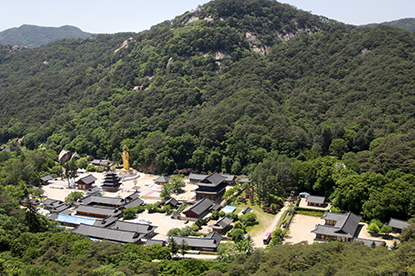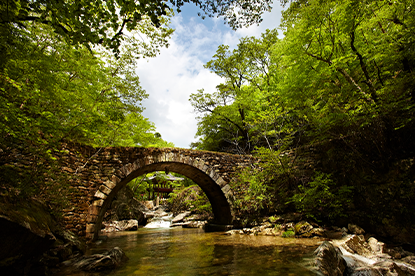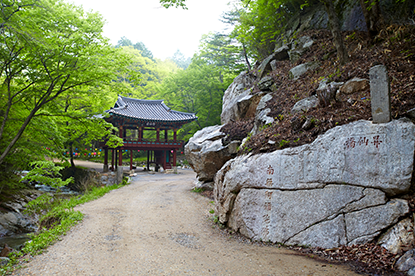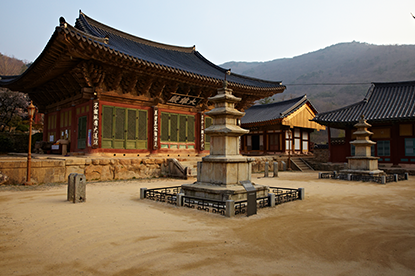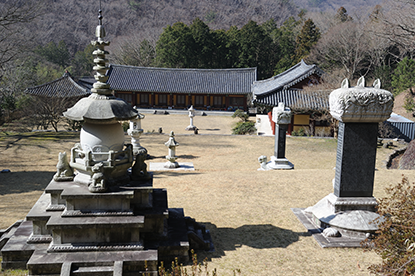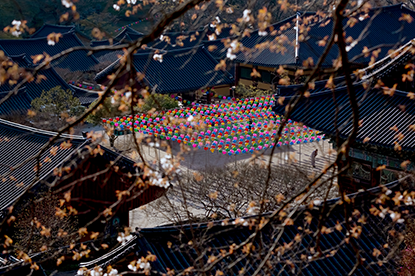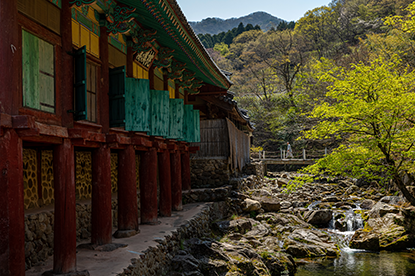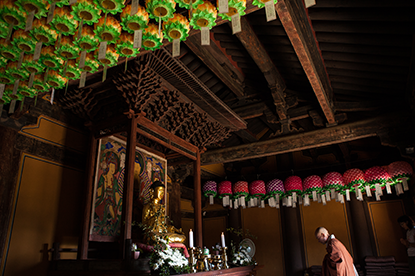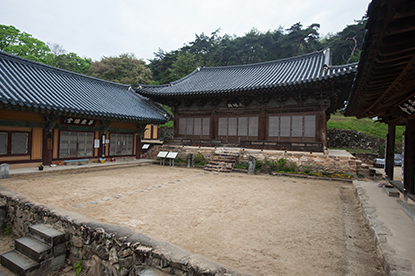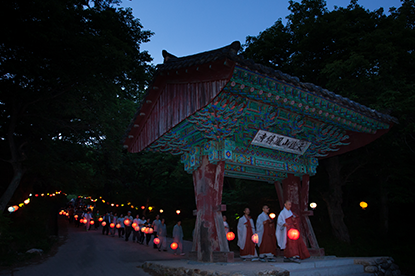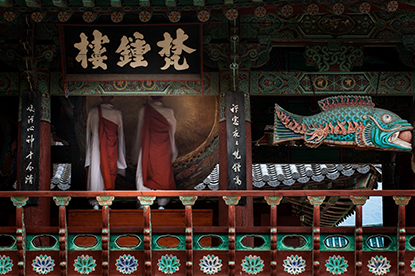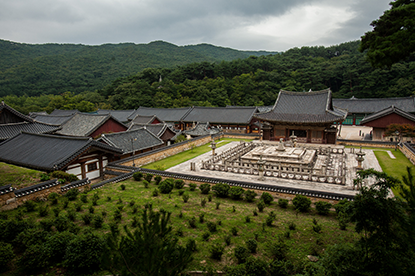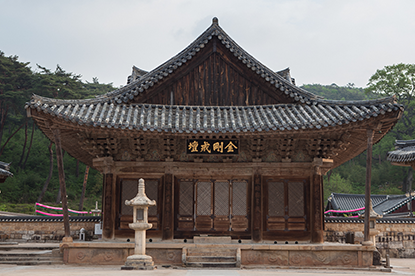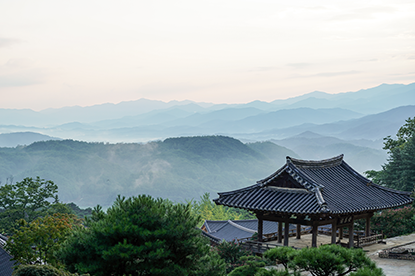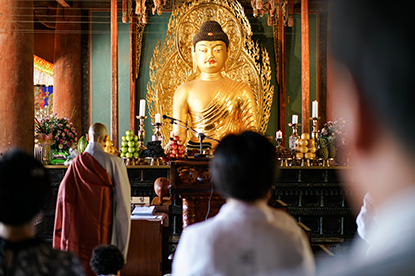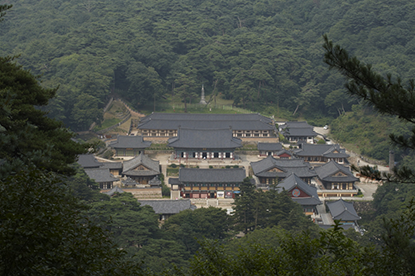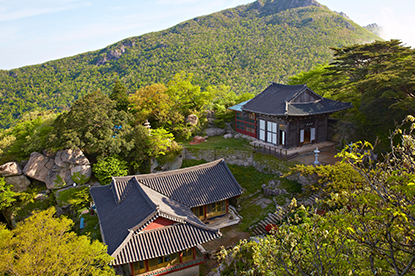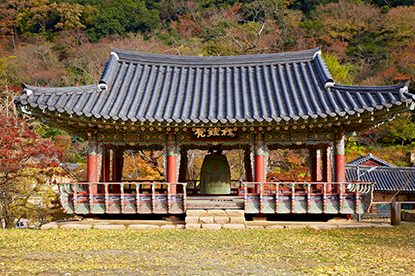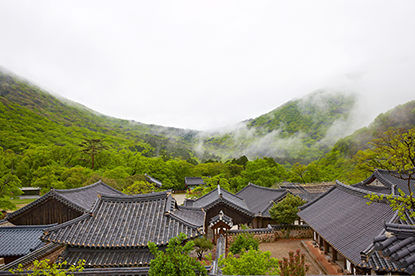Korean Heritage Passport Tour
- Incheon International Airport PR Center (Traveler Center)
- Gaya Culture Route
- Gwandong Pungryu Era Route
- Baekje Antiquity Route
- Korean Temple Monasteries (Sansa) Route
- Korean Confucian Academy Route
- Prehistoric Landscape Route
- Mythic Landscape Route
- Folk Music Route
- Royalty Route
- Golden Era Route
Gongju, Boeun, Suncheon, Andong, Yangsan, Yeongju, Hapcheon, Haenam
-Mountain monasteries in Korea
Buddhism was introduced to Korea during the Three Kingdoms period. Upon unifying the three kingdoms, Silla adopted Buddhism as its state religion. Thereafter, Korean Buddhism flourished and exerted significant influence on Korean society and culture. Although some temples were built inside city limits, others were often built in mountains. These mountain temples are called “Sansa” temples, and they remain part of Korean culture and heritage with tangible and intangible cultural traditions that have been passed all the way down to modern generations. In addition to serving as sanctums of Buddhist practices such as rituals, rites, and sermons, Sansa temples have been a melting pot of values beliefs and values. For example, Sansa temples often enshrine their founding monk and national heroes. Tongdosa Temple, Buseoksa Temple, Bongjeongsa Temple, Beopjusa Temple, Magoksa Temple, Seonamsa Temple, and Daeheungsa Temple are registered as UNESCO World Heritage sites under the category of “Sansa, Buddhist Mountain Monasteries in Korea.” These seven temples continue observing traditional Buddhist rituals, and they are treasure troves of resources representing Korean Korean Heritage. Moreover, the “three jewels temples” of Korea - Tongdosa in Yangsan, Haeinsa in Hapcheon, and Songgwangsa in Suncheon - have their own history and culture with well-preserved structures, engravings, relics, and documents from various past eras.
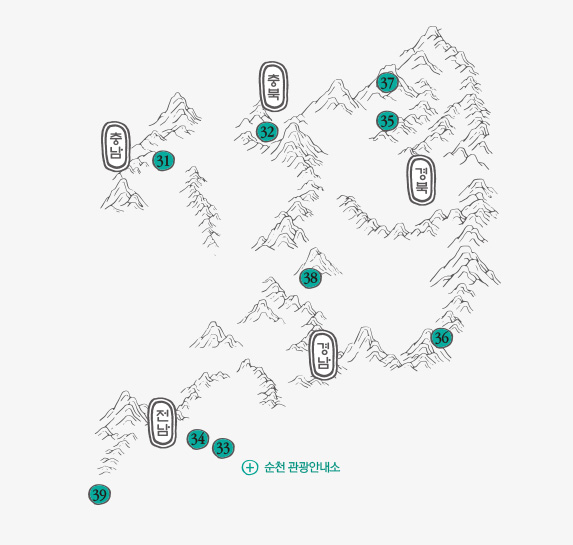
- Magoksa Temple, Gongju
- Beopjusa Temple, Boeun
- Seonamsa Temple, Suncheon
- Songgwangsa Temple, Suncheon
- Bongjeongsa Temple, Andong
- Tongdosa Temple, Yangsan
- Buseoksa Temple, Yeongju
- Haeinsa Temple, Hapcheon
- Daeheungsa Temple, Haenam
Magoksa Temple in Gongju, a thousand-year-old temple with beautiful green landscapes
-
Address
966, Magoksa-ro, Sagok-myeon, Gongju-si,
Chungcheongnam-do -
Inquiries
041-841-6221
-
Admission
Adults KRW 3,000 / Teenagers KRW 1,500 / Children KRW 1,000
-
Stamp
In front of the five-story stone pagoda at Magoksa Temple, in front of the temple stay office
-
Website
-
Directions
Take a bus bound for Gongju at Seoul Express Bus Terminal → Get off at Gongju Bus Terminal → Take bus no. 770 at the Central Bus Terminal (to Singwan Elementary School) bus stop → Get off at Magoksa Temple bus stop → Walk for 10 minutes
Since its foundation, Magoksa Temple survived the test of time through the Goryeo and Joseon Dynasties, and all the way to the present day. It has a unique layout that features a stream that runs through the heart of the Temple, dividing it into the Bukwon and Namwon compounds, and it is a great example of a Korean Sansa temple. The Bukwon part of the Temple is a place for worship. It has Daeungjeon Hall at its center and the Magoksa Temple Five-story Stone Pagoda from the 14th century, which has a finial section designed in the Tibetan style. Meanwhile, the Namwon part of the Temple has a modest courtyard in the middle and Yeongsanjeon Hall, which was primarily used for meditation. Also, Magoksa Temple produced a number of renowned Buddhist painter monks who painted Buddhist paintings. To celebrate this legacy, the Temple hosts a Bulmodaryeje ritual each year and commemorates past Buddhist painter monks who served at Magoksa Temple.
Daeungbojeon Hall at Magoksa Temple in Gongju is a sanctuary that enshrines Buddha Sakyamuni. With Sakyamuni positioned in the middle, the Hall also enshrines Yaksayeoraebul and Amitabul to the right and left. According to history, the Hall was rebuilt when the Temple was rebuilt (1651) by Gaksun Daesa during the Joseon Dynasty.
The Five-story Stone Pagoda at Magoksa has two foundational tiers that support the weight of the entire pagoda, then a five-story body placed on top of the foundation, followed by some finial decorations. Given the unique shape of the finial section, the Stone Pagoda is presumed to have been made sometime during the late Goryeo Dynasty period, which was influenced by the Yuan Dynasty. In other words, during the late Goryeo Dynasty period, cultural interactions with the Yuan Dynasty brought Lama Buddhism to Goryeo, and this Stone Pagoda is a direct example of this new sect of Buddhism making its way across Korea.
Yeongsanjeon Hall at Magoksa Temple in Gongju enshrines Buddha Sakyamuni and a Palsangdo that illustrates the biography of the Buddha. It is also called the “Cheonbuljeon” as it enshrines the Cheonbul as well. Yeongsanjeon Hall is the oldest building in Magoksa Temple, which was rebuilt by Gaksun Daesa during the Joseon Dynasty when he rebuilt the Temple itself. It is located to the west of Haetalmun Gate.
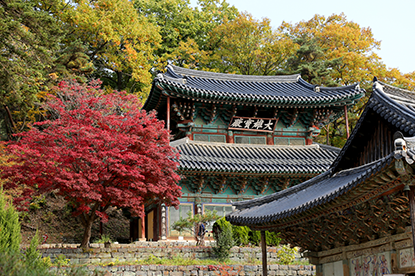
Provided by the Jogye Order of Korean Buddhism
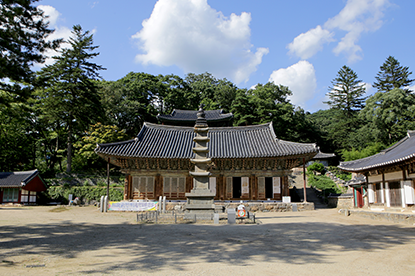
Provided by the Jogye Order of Korean Buddhism
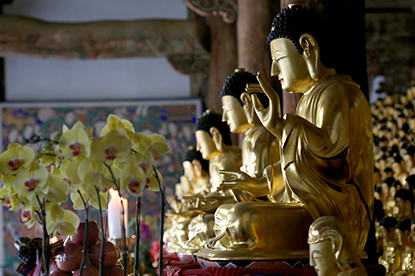
Provided by the Jogye Order of Korean Buddhism









